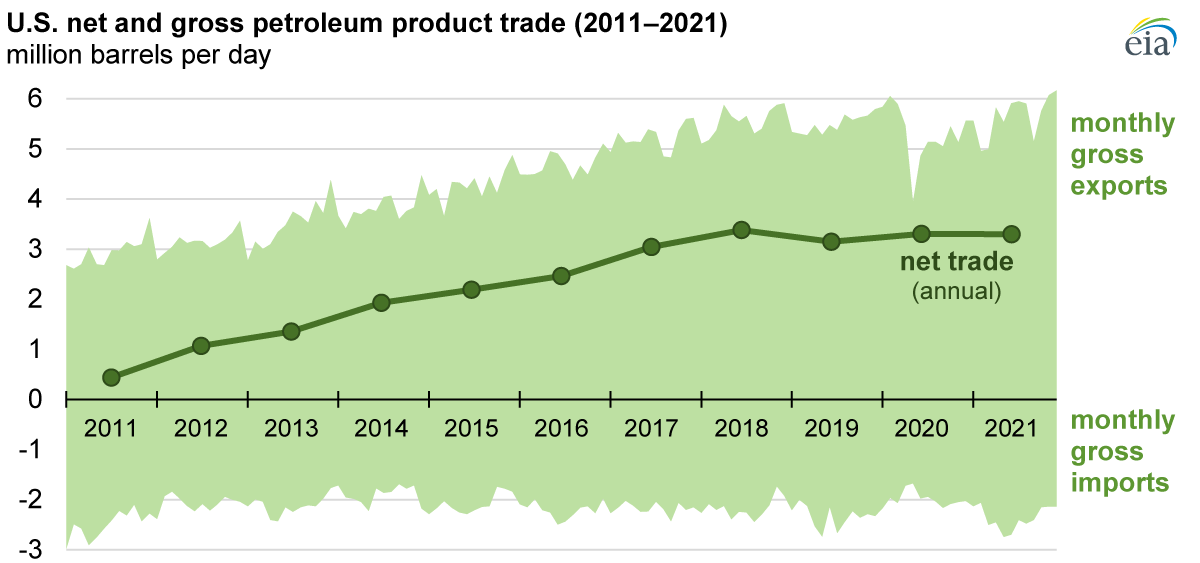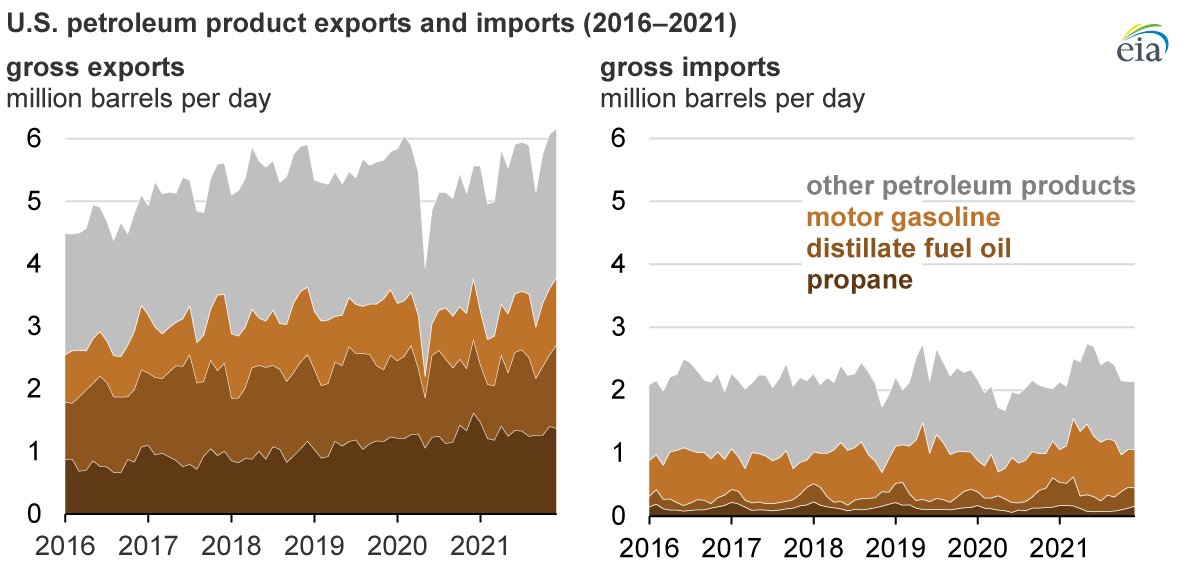In 2021, an average of 5.7 million barrels per day (b/d) of petroleum products were exported from the United States, an increase of 360,000 b/d from 2020. U.S. imports of petroleum products also increased to 2.4 million b/d in 2021, up by 371,000 b/d from 2020. Increased domestic and global economic activity was one factor that increased both petroleum product imports into the United States and U.S. exports of petroleum products during 2021. U.S. imports increased more than U.S. exports of petroleum products in 2021, but the United States exported more petroleum products than it imported by nearly 3.3 million b/d.

A greater volume of propane was exported from the United States in 2021 than any other petroleum product for a second consecutive year (propane surpassed distillate fuel oil in 2020). More than 1 million b/d of propane was exported from the United States in 2021 for the third consecutive year. U.S. exports of propane have increased every year since 2007 because of increased domestic propane production, which was the result of increased upstream crude oil and natural gas production, and expanded export capacity along the U.S. Gulf Coast.
In 2021, net U.S. exports of distillate fuel oil decreased to 804,000 b/d, the lowest amount since 2011. U.S. distillate exports were lower in 2021, despite increased global demand compared with 2020, because demand also increased in the United States. Increased U.S. distillate demand may have contributed to reduced distillate exports and almost certainly contributed to increased distillate imports.

Like distillate, U.S. net exports of motor gasoline decreased in 2021. Unlike distillate fuel oil, however, U.S. exports of motor gasoline (which includes both finished motor gasoline and motor gasoline blending components) increased in 2021 as a result of rising global demand and rising U.S. refinery production, compared with the down market in 2020.
However, rising domestic gasoline demand also contributed to rising imports of the fuel into some regions of the United States, even as exports increased out of other regions. Lost refining capacity in 2020 likely increased gasoline imports in 2021 to help account for the lost production from closed refineries such as the Philadelphia Energy Solutions refinery on the East Coast and other refinery closures and refits on the West Coast.
Principal contributor: Kevin Hack

Follow us on social media: